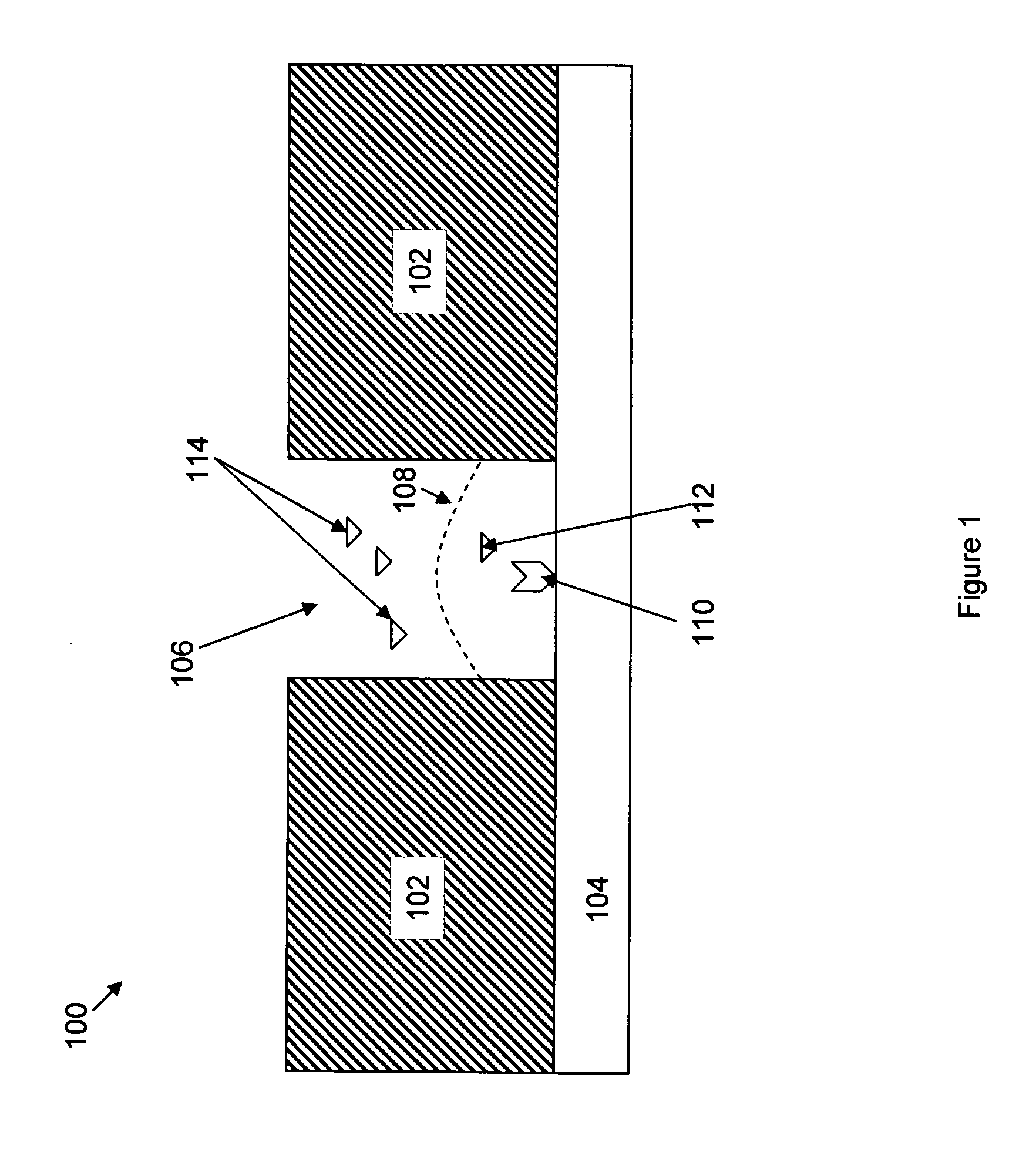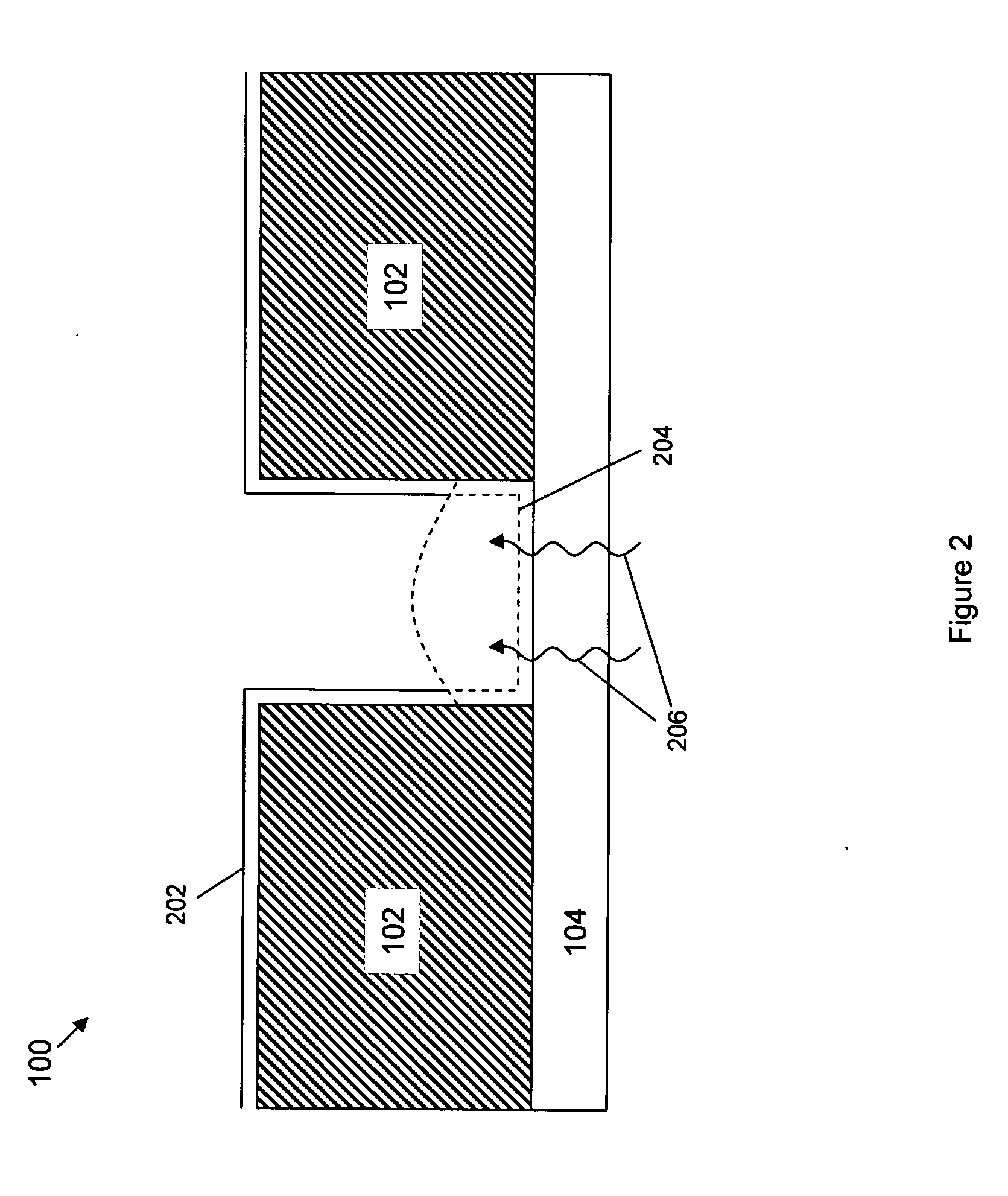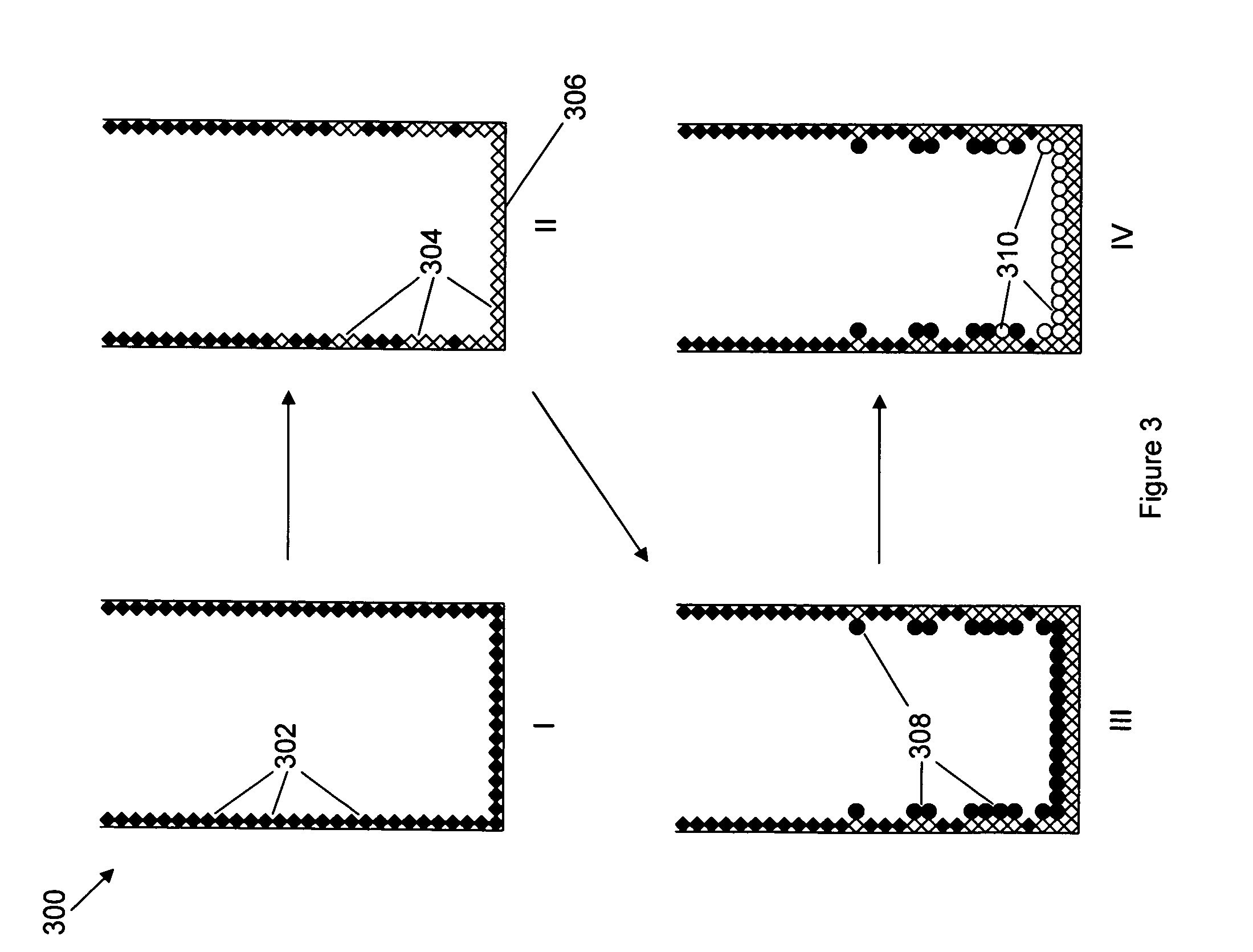Articles having localized molecules disposed thereon and methods of producing same
a technology of localized molecules and atoms, which is applied in the field of articles having localized molecules disposed thereon and methods of producing same, can solve the problem of only a very small volume within the core, and achieve the effect of preventing diffusion in the intra-observation region
- Summary
- Abstract
- Description
- Claims
- Application Information
AI Technical Summary
Benefits of technology
Problems solved by technology
Method used
Image
Examples
example 1
Photoactivatable Groups for Selective Immobilization of DNA Polymerases
[0108]A substrate may be used that includes a glass substrate layer with an aluminum cladding layer deposited over the glass layer. An array of ZMW cores is fabricated into the cladding layer to provide apertures through the cladding layer to the glass substrate. The overall substrate is optionally further treated to provide a thin insulating layer over the cladding layer and cores, e.g., to provide a substantially uniform surface. Such layers typically include SiO2 coatings applied by vapor deposition techniques, including, e.g., CVD and MVD methods, as well as other methods such as fluid deposition or in situ formation using, e.g., spin on glass systems. The substrate surface is derivatized to first provide a relatively uniform population of amino terminated groups coupled to the surface. For example, for glass surfaces, such derivatization typically employs standard aminosilane chemistries known in the art. Al...
example 2
Selective Digestion of DNA Polymerase Enzymes Using Bead Bound Proteases
[0112]ZMWs that had previously been plasma treated in the presence of a PDMS gasket (to provide a priming layer), were provided with Φ29N62D DNA Polymerase (complexed with a circular template nucleic acid) substantially uniformly surface adsorbed over the entire surface of the array, including upon the upper surface of the cladding layer.
[0113]The array was then contacted with beads bearing immobilized Proteinase-K (Sigma Chemical Co., P0803 or P9290) for 5 minutes at room temperature in 25 mM Tris-HCl, pH 7.5, 10 mM β-mercaptoethanol, 1 mM EDTA. The bead diameter far exceeded the nominal diameter of the waveguide cores on the array, preventing entry to the bead or its associated protease molecules into the cores to any substantial degree.
[0114]Polymerization reaction mixture, including four dNTPs was then contacted with the array under conditions suitable for DNA synthesis (50 mM Tris-HCl, pH 7.5, 75 mM KCl, 20...
PUM
| Property | Measurement | Unit |
|---|---|---|
| wavelength | aaaaa | aaaaa |
| diameter | aaaaa | aaaaa |
| diameter | aaaaa | aaaaa |
Abstract
Description
Claims
Application Information
 Login to View More
Login to View More - R&D
- Intellectual Property
- Life Sciences
- Materials
- Tech Scout
- Unparalleled Data Quality
- Higher Quality Content
- 60% Fewer Hallucinations
Browse by: Latest US Patents, China's latest patents, Technical Efficacy Thesaurus, Application Domain, Technology Topic, Popular Technical Reports.
© 2025 PatSnap. All rights reserved.Legal|Privacy policy|Modern Slavery Act Transparency Statement|Sitemap|About US| Contact US: help@patsnap.com



